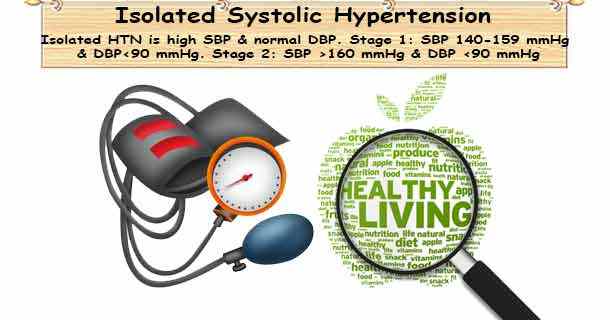Systolic hypertension, characterized by elevated systolic blood pressure (SBP) while diastolic blood pressure (DBP) remains within normal range, is a common form of hypertension affecting a significant portion of the population worldwide. As a cardiologist specializing in arrhythmias, I frequently encounter patients requiring comprehensive management strategies to address systolic hypertension effectively. This article aims to explore six key treatments for systolic hypertension, encompassing lifestyle modifications, pharmacotherapy, and emerging therapeutic approaches.
What Is Systolic Hypertension?
Hypertension is defined as persistently elevated blood pressure readings, with systolic blood pressure (the top number) ≥130 mm Hg and diastolic blood pressure (the bottom number) <80 mm Hg. Systolic hypertension, particularly in older adults, is associated with increased cardiovascular risk, including heart attacks, strokes, heart failure, and kidney disease.
SEE ALSO: What Are The Symptoms of Ventricular Abnormalities?
Pathophysiology And Risk Factors
The pathophysiology of systolic hypertension often involves:
Arterial Stiffness: Reduced elasticity of arterial walls contributes to increased systolic blood pressure.
Aging: Systolic blood pressure tends to rise with age due to structural changes in blood vessels and increased peripheral vascular resistance.
Lifestyle Factors: Poor diet, sedentary lifestyle, excessive alcohol intake, and smoking contribute to the development and progression of hypertension.
Diagnosis And Evaluation
Accurate diagnosis of hypertension involves multiple blood pressure measurements over time, assessment of target organ damage, and evaluation for secondary causes. Diagnostic tools include:
Ambulatory Blood Pressure Monitoring: Provides a comprehensive profile of blood pressure variations throughout the day and night.
Laboratory Tests: Including electrolyte levels, renal function tests, and lipid profile to assess cardiovascular risk factors.
6 Treatments for Systolic Hypertension
1. Lifestyle Modifications
Dietary Approaches
DASH Diet: Emphasizes fruits, vegetables, whole grains, and low-fat dairy while limiting saturated fats and cholesterol. High in potassium, magnesium, and calcium, which are beneficial for blood pressure control.
Sodium Restriction: Limiting sodium intake to less than 2,300 mg per day (or ideally 1,500 mg) helps reduce fluid retention and lower blood pressure.
Physical Activity
Regular Exercise: Engaging in aerobic exercise for at least 150 minutes per week (or 30 minutes most days of the week) can lower systolic blood pressure by promoting cardiovascular fitness and reducing overall vascular resistance.
Weight Management
Weight Loss: Achieving and maintaining a healthy weight through a balanced diet and regular physical activity can significantly reduce systolic blood pressure.
2. Pharmacotherapy
First-Line Medications
Thiazide Diuretics: Such as hydrochlorothiazide, reduce blood volume and lower blood pressure by promoting sodium and water excretion from the kidneys.
ACE Inhibitors (ACEIs) and Angiotensin II Receptor Blockers (ARBs): Block the effects of angiotensin II, a hormone that causes blood vessels to constrict, thereby reducing blood pressure.
Combination Therapy
Calcium Channel Blockers (CCBs) and ACEIs/ARBs: Combined therapy can achieve better blood pressure control, especially in patients with multiple cardiovascular risk factors.
3. Renal Denervation
Emerging Interventional Therapy
Renal Artery Ablation: A minimally invasive procedure that uses radiofrequency or ultrasound energy to disrupt renal sympathetic nerves, which play a role in regulating blood pressure. This technique is still investigational and not widely adopted.
4. Lifestyle Approaches
Stress Reduction
Mindfulness and Meditation: Techniques to reduce stress and promote relaxation can help lower blood pressure over time.
Sleep Hygiene
Sleep Apnea Management: Treating sleep disorders such as obstructive sleep apnea can improve blood pressure control.
5. Dietary Supplements
Potential Adjunctive Therapies
Potassium and Magnesium: Supplements may be beneficial for individuals with low dietary intake, as both minerals play roles in blood pressure regulation and cardiovascular health.
Omega-3 Fatty Acids: Found in fish oil supplements, may modestly reduce blood pressure and provide additional cardiovascular benefits.
6. Patient Education and Monitoring
Importance of Adherence
Medication Adherence: Educating patients about the importance of taking medications as prescribed, monitoring blood pressure at home, and recognizing signs of medication side effects.
Regular Follow-Up
Monitoring: Regular follow-up visits with healthcare providers to adjust treatment plans based on blood pressure readings and overall health status.
Conclusion
Effective management of systolic hypertension requires a multifaceted approach that integrates lifestyle modifications, pharmacotherapy, and patient education. By addressing modifiable risk factors such as diet, physical activity, and stress, healthcare providers can help patients achieve and maintain optimal blood pressure control, thereby reducing their risk of cardiovascular events and improving overall quality of life.
As ongoing research continues to refine treatment strategies for hypertension, including novel therapeutic approaches and personalized medicine, healthcare professionals remain at the forefront of guiding patients towards better cardiovascular health outcomes.


